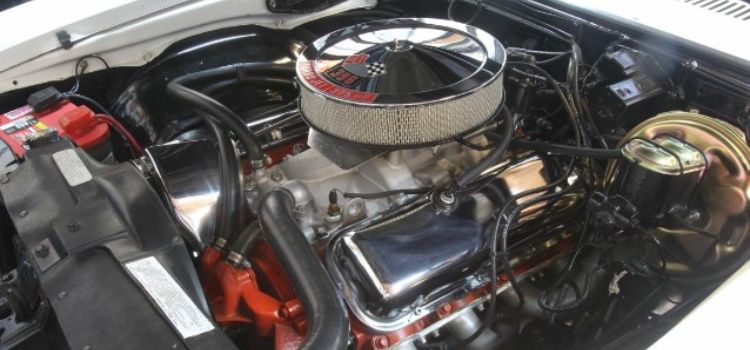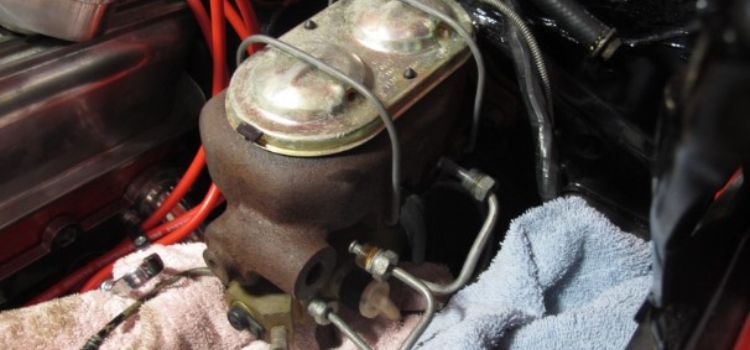As an Amazon Associate, I earn from qualifying purchases
Power brakes are essential in modern vehicles, providing the necessary assistance to ensure effective braking with minimal pedal effort. Understanding how much vacuum is needed for power brakes is crucial for maintaining vehicle safety and performance. This comprehensive guide explores the science behind power brakes, the required vacuum levels, troubleshooting common issues, and maintaining optimal performance.
The Basics of Power Brakes
What Are Power Brakes?
Power brakes, or power-assisted brakes, use a vacuum system to amplify the force the driver applies on the brake pedal. This system significantly reduces the effort required to stop the vehicle, making driving safer and more comfortable.
History and Development
The concept of power brakes dates back to the early 20th century, with significant advancements occurring post-World War II. Early systems were pneumatic, but modern vehicles predominantly use vacuum-assisted systems.

Importance of Vacuum in Power Brakes
The vacuum in power brakes is vital because it provides the necessary force multiplication. The power assist feature would not function correctly without an adequate vacuum, leading to increased stopping distances and potential safety hazards.
Technical Specifications
Optimal Vacuum Levels
The optimal vacuum level for most power brake systems ranges between 18 and 22 inches of mercury (Hg). This range ensures that the brake booster functions efficiently, providing the necessary assistance to the braking system.
Components of a Power Brake System
- Brake Booster: The heart of the power brake system that uses a vacuum to amplify pedal force.
- Vacuum Pump: Generates the vacuum required for the brake booster.
- Check Valve: Ensures vacuum is maintained even when the engine is off.
- Vacuum Lines: Channels through which vacuum travels from the pump to the booster.
Measuring Vacuum Levels
Mechanics can measure the vacuum level in the system using a vacuum gauge. Regular checks help maintain optimal brake performance and identify issues early.
How Power Brakes Work
Vacuum Generation
In most vehicles, the engine’s intake manifold generates the vacuum. An auxiliary vacuum pump is used in diesel engines or high-performance vehicles.
Vacuum Application
The vacuum is applied to the brake booster, creating a pressure differential that amplifies the force applied to the brake pedal.
Force Multiplication
When the driver presses the brake pedal, the booster uses the vacuum to multiply the force, making it easier to engage the brakes with less physical effort.
Types and Categories of Power Brake Systems
Vacuum-Assisted Systems
The most common type is utilizing the engine’s vacuum or an auxiliary pump to provide the necessary assistance.
Hydraulic Brake Assist
It uses hydraulic pressure generated by the power steering pump to assist braking.
Electro-Hydraulic Brake Assist
It combines electric motors and hydraulic systems for enhanced braking performance, typically in hybrid and electric vehicles.
Pneumatic Brake Systems
They are used in heavy-duty vehicles like trucks and buses, utilizing compressed air for brake assistance.

Symptoms and Signs of Vacuum Issues in Power Brakes
Hard Brake Pedal
A hard brake pedal often indicates insufficient vacuum, making it difficult to stop the vehicle.
Increased Stopping Distances
The brake booster cannot provide sufficient assistance without adequate vacuum, leading to longer stopping distances.
Hissing Noise
A continuous hissing noise when the brake pedal is pressed suggests a vacuum leak in the system.
Warning Lights
Modern vehicles have sensors that can detect vacuum issues, triggering warning lights on the dashboard.
Causes and Risk Factors for Vacuum Issues
Vacuum Leaks
Leaks in the vacuum lines or brake booster are common causes of reduced vacuum.
Faulty Vacuum Pump
A malfunctioning vacuum pump can fail to generate adequate vacuum pressure.
Worn Check Valve
A worn or damaged check valve can prevent the system from maintaining the necessary vacuum levels.
Engine Performance Issues
Problems with the engine, such as low compression or a faulty intake manifold, can affect vacuum generation.

Diagnosis and Tests
Visual Inspection
Checking for visible signs of damage or wear in the vacuum lines and connections.
Vacuum Gauge Test
I am using a vacuum gauge will be used to measure the actual vacuum levels in the system.
Smoke Test
A smoke test can help identify leaks in the vacuum system by introducing smoke and observing where it escapes.
Functional Test of Brake Booster
I am testing the brake booster functionality by observing changes in brake pedal resistance and stopping performance.
Treatment and Maintenance Options
Replacing Faulty Components
We identify and replace damaged vacuum lines and pumps or check valves.
Regular Maintenance
I regularly check and maintain the vacuum system as part of routine vehicle maintenance.
Ensuring Proper Engine Performance
Maintaining the engine in optimal condition to ensure it generates adequate vacuum.
Preventive Measures
Regular Inspections
We are incorporating regular vacuum system inspections into the vehicle’s maintenance schedule.
Using Quality Parts
They use high-quality OEM parts for repairs and replacements to ensure system integrity.
Monitoring Brake Performance
I was being attentive to changes in brake performance and addressing issues promptly.
Personal Stories or Case Studies
Case Study 1: Vacuum Leak Leading to Brake Failure
A real-life incident where a vacuum leak led to a near-miss accident, highlighting the importance of regular inspections and maintenance.
Case Study 2: Successful Repair of a Faulty Vacuum Pump
A detailed account of diagnosing and repairing a faulty vacuum pump, restoring optimal brake performance.
Expert Insights
Interview with a Brake Specialist
Insights from a brake specialist on common vacuum issues and best practices for maintenance.
Tips from Automotive Engineers
Advice from automotive engineers on maintaining a healthy vacuum system in power brakes.
Conclusion
Maintaining power brakes’ vacuum levels is crucial for vehicle safety and performance. Regular inspections, timely repairs, and understanding the signs of vacuum issues can help ensure your braking system functions optimally. Stay informed, stay safe, and ensure your vehicle’s power brakes are always in top condition.
As an Amazon Associate, I earn from qualifying purchases